The Actual Width of Tires?
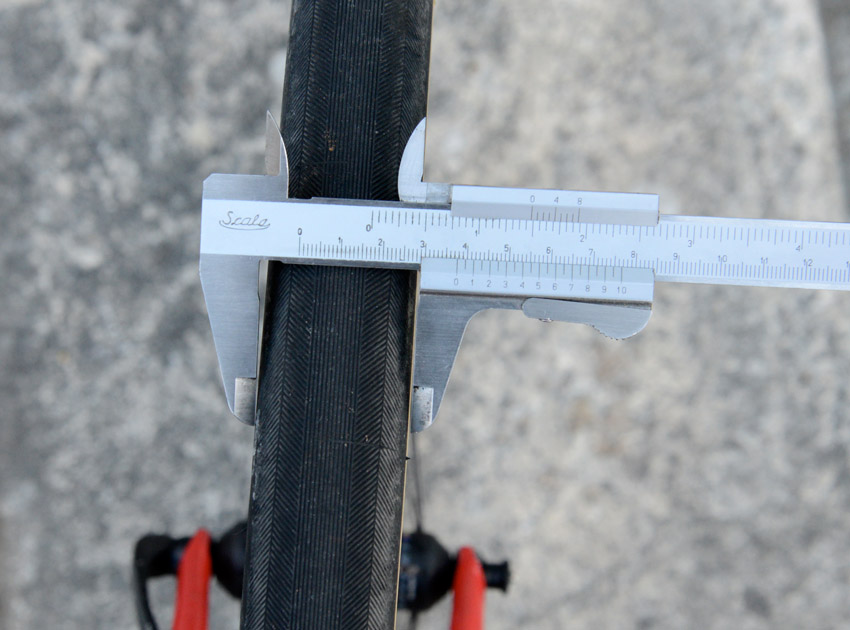
Sometimes we get an e-mail or a phone call from a customer asking, “I bought the Compass 32 mm tires, but they only measure 28.5 mm on my rims. Why is this?”
Decades ago, some tire makers cheated when stating tire widths. Why? To make their tires appear lighter than they really were. By selling a 25 mm tire as a 28 mm, they made the tire seem lighter than the competition’s tires, which actually were 3 mm wider.
That was long ago, and it’s not what is going on here. We label our tires as close to their actual width as possible. Here is why different people report different widths for their tires:
- It can be difficult to accurately measure the width of a supple tire.
- The casing of supple tires stretches for a few weeks or even months after they have been installed.
- Tire width depends on tire pressure and rim width. That means the actual width can be a little narrower or wider than the nominal width.
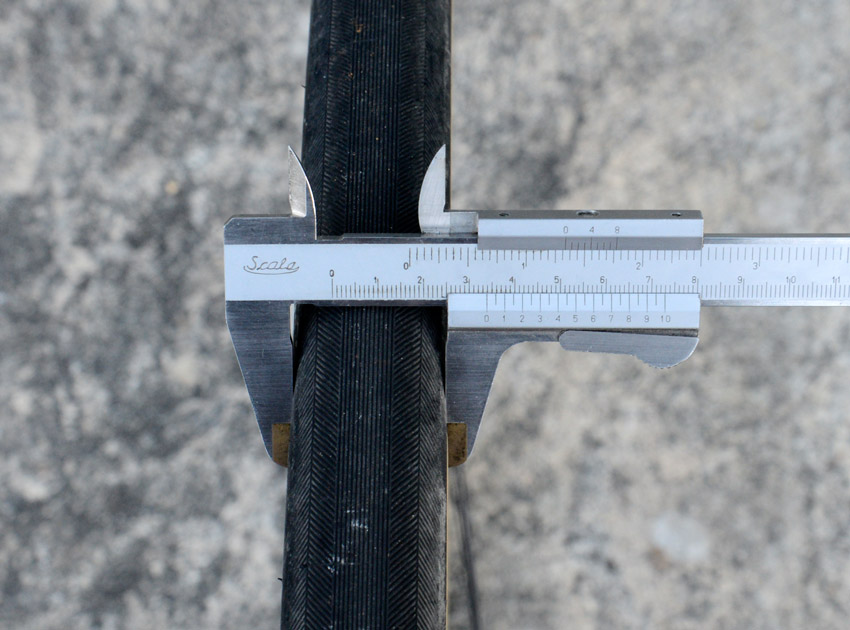
I recently installed a set of Compass Barlow Pass Extralight 700C x 38 mm tires on a Bicycle Quarterly test bike. How wide are they really?
When you measure metal with calipers, you squeeze the calipers until they won’t go any further, and then read your measurement. If you compress the calipers on a rubber tire, the tire will deflect. In this case, I measured 34 mm. But that isn’t the actual width of the tire: If you tried to fit the tire into a frame with just enough clearance for 34 mm tires, it would rub.
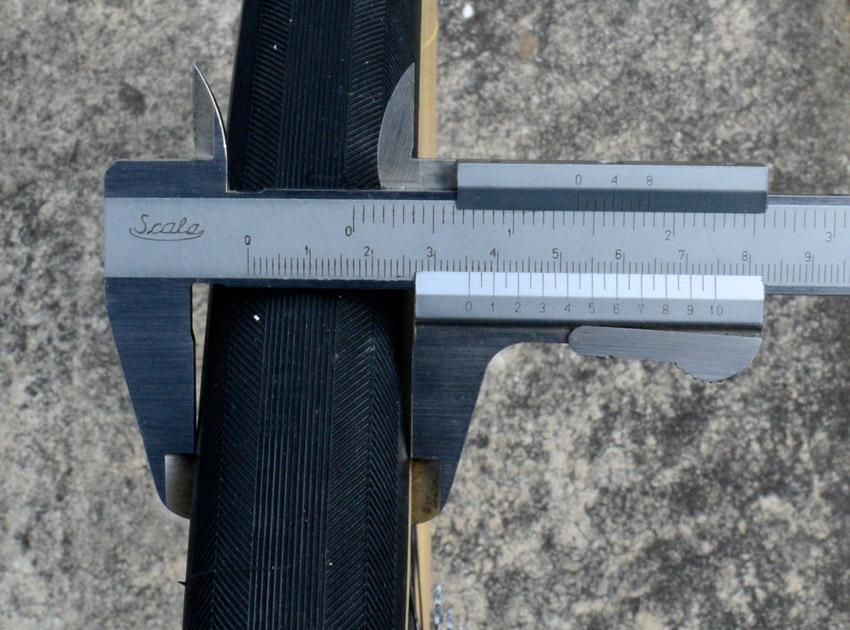
Here is how you measure tire width: Open up your calipers in 0.5 mm increments. Check whether there is “play” between the caliper jaws and the tire. In the photo above, I am already at 35.5 mm, and the calipers still fit snugly on the tire.
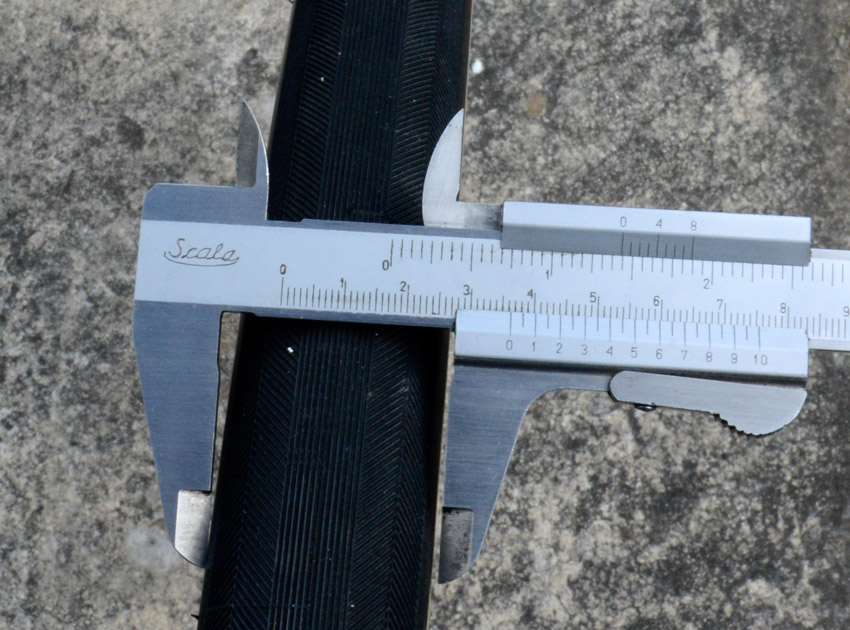
At 36.5 mm, I am finally getting some wiggle. This means that the tire is just over 36 mm wide. That is the width when it’s new.
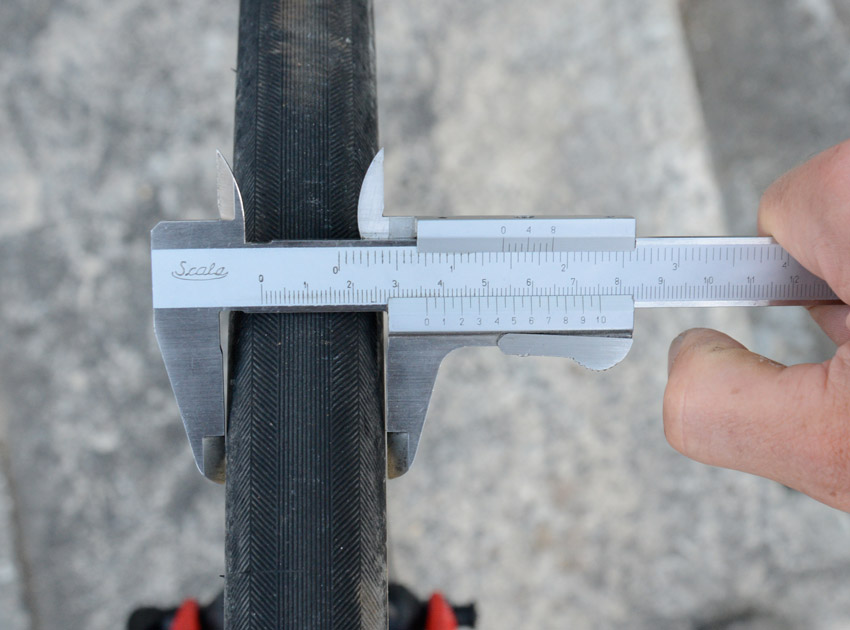
Two weeks later, I measured the tire again. It has stretched to 36.5 mm. I was surprised that it was still so narrow, until I checked the tire pressure. I had let the pressure drop to about 30 psi. How wide would the tire be at its maximum pressure?

I inflated the tire to 75 psi, and lo and behold, it now measured 37.5 mm. It probably will stretch a little more, and achieve its full 38 mm width before long. Of course, I wouldn’t ride it at that pressure (unless I put it on a tandem), so at the pressures I usually ride, the tire will be a tad narrower than its nominal width.
Should I inflate my tires to a higher pressure to make them wider? No, that doesn’t make sense. Your tire’s comfort and performance is determined by the tire width at the contact patch, which gets larger at lower pressure. Putting more air than necessary into the tire defeats the purpose, even if it makes the tire wider where it does not touch the ground.
For narrower tires, rim width also plays a role. The Compass Stampede Pass tires measure about 31 mm on a 20 mm-wide rim, like a Mavic MA-2, but 33 mm wide on a 23 mm-wide rim, like a Grand Bois rim. For wider tires, this is less of a factor, since all the rims we use are narrow when compared to the wide tire.
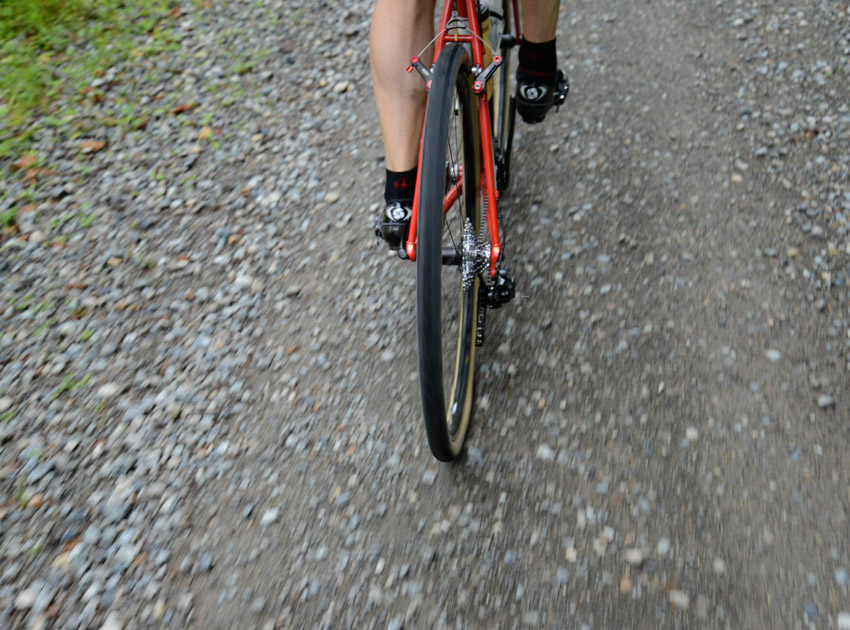
In any case, our testing has shown that the material and construction of the casing are more important for comfort and speed than a millimeter or two in width. When you put a set of supple Compass tires on your bike, you’ll notice a huge difference in how the bike feels and performs.
And when you buy your next bike, make sure to spec a frame that provides ample tire width. On my own bikes, I am not too concerned whether the tires measure 39 or 41.5 mm. Either is ample for most of the riding I do.
Further reading: How Wide a Tire Can I Run?


